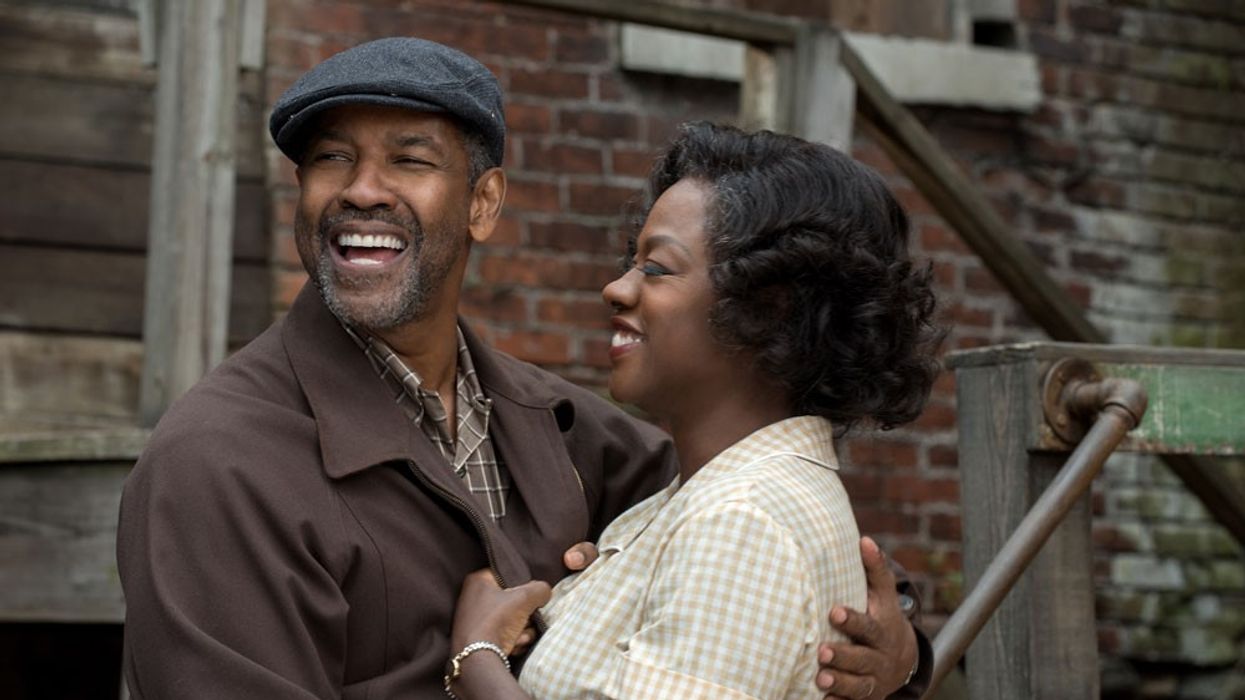How the 'Fences' Sound Team Built an Emotional Soundscape for Denzel Washington's Dialogue
Denzel Washington’s Fences is an impassioned, dialogue-driven journey where sound plays a surreptitious role that they didn't want you to notice.

Adapted from August Wilson’s Pulitzer Prize-winning play, Fences follows Troy (Denzel Washington), a sanitation worker who tries to be a good husband to his wife (Viola Davis) and children while living in 1950s Pittsburgh—but his lamentable decision-making throws a once loving home into unrest.
The narrative reveals an unprecedented sorrow that churns an emotional toll hard to express with words alone, which is ironic since the amount of dialogue spoken in the film’s first reel is more than any modern day movie’s entire production. When performances take center stage and there’s nothing for a sound team to hide behind—no action sequences, no visual effects, no music—capturing clean dialogue is imperative to connect the audience to the story. For Fences, this task that began with production mixer Willie Burton (Shawshank Redemption, Se7en) along with boom operator Douglass Shamburger and sound utility Kelly Roofner.
“On a show like this every word was important. It’s a type of movie where even if you can get it on boom you’ll want to cover yourself with a radio mic.”
Burton prepped in Pittsburgh scouting the practical locations used in the film—the main set being the small neighborhood home where Troy and his family lives. “The house was small,” recalls the production mixer. “There was hardly any room for the dolly or cameras let alone a boom operator.”
Using a Zaxcom Deva 16 and Mix-12, Burton created a mono mix using up to two booms and an array of ISO tracks. Sennheiser MKH 50 and Schoeps CMIT-5U overhead mics were tapped with Lectronsonics wireless paired with Sanken COS-11D lavs. For Viola Davis in particular, a DPA 4061 was chose as it gave her the voice quality the team was looking for. “The Sanken wasn’t sounding quite right for her. It’s not just about having any radio mic on a person, you have to make sure you have the correct mic for their voice,” explains Burton.
Another obstacle was the local wildlife. “In the front and backyard we had a ton of chirping birds. We had to cut several takes because they were so loud. We ended up doing a little research and got these electronic bird repellants which helped some. Production even anchored a few owls on the roof to scare them away,” the production mixer notes.
With dialogue being imperative Burton always wired before each day of shooting. “On a show like this every word was important. It’s a type of movie where even if you can get it on boom you’ll want to cover yourself with a radio mic. It’s about giving post options.”
What helped the production sound team was Washington’s preparation. “The nice thing about Denzel was he would do a complete rehearsal and blocking for the entire crew,” says Burton, something that’s becoming an increasingly lost art as more directors now tape the rehearsals. “Normally, if you shoot four or five pages you’re moving quite well, but we would rehearse entire sequences where I would have ten pages of dialogue on my cart to follow,” says Burton.
Burton admits the work on set is a “blueprint for post” which they go on to enhance and really make a difference. But re-recording mixers Scott Millan and Gregg Rudloff took a subtle approach in supporting the tracks. “Our mantra while working on this film was truth,” says Millan. “Denzel's directorial artistry perpetually guided all of us to honor the words of Mr. August Wilson.”
“Denzel's directorial artistry perpetually guided all of us to honor the words of Mr. August Wilson.”
When they viewed the film in its entirety for the first time, the re-recording mixers were completely stunned. “It’s a very powerful film with very powerful performances and neither one of us could speak afterwards,” Millan recalls. “In all honesty, when we watch a film for the first time we try to prepare what kind of workload it will be and think about the creative process, analyzing the schedule. Watching this film it wasn’t possible.”
Post sound took a minimalist approach stripping down tracks so the material would carry the biggest emotional impact. “This wasn’t about flexing our muscles or showing off what we can do. These movies are difficult to accomplish because there is nothing to hide behind. There are not huge visual effects or action scenes where little stuff can get you by and you’re ok. It wasn’t about broad brush strokes but the fine brush strokes instead,” explains Rudloff.
“After watching a film, the story goes from my heart to my fingers.”
At times, post-sound would even reverse engineer scenes for emotional impact. In a backyard scene where Troy’s friend Bono (Stephen Henderson) and oldest son Lyons (Russell Hornsby) are all drinking, post added in neighborhood sounds in order to remove them later. “We didn’t need to support that scene by introducing neighborhood sounds, but we wanted to be able to extract them later and make the scene more intimate when Troy started to tell the story of his childhood,” asserts Rudloff. By removing the effects, the audience only needed to aurally focus on the devastating story of Tory’s upbringing.
After all their years of experience, the re-recording mixers state that they truly must understand the story and believe in what the filmmaker is trying to accomplish in order to do their jobs. Millan adds, “After watching a film, the story goes from my heart to my fingers. It’s like playing a piano and there’s not a right or wrong. It’s what works for the audience and hopefully they believe in the story and don’t feel they’ve been manipulated by sound or by any other part of the film.”














